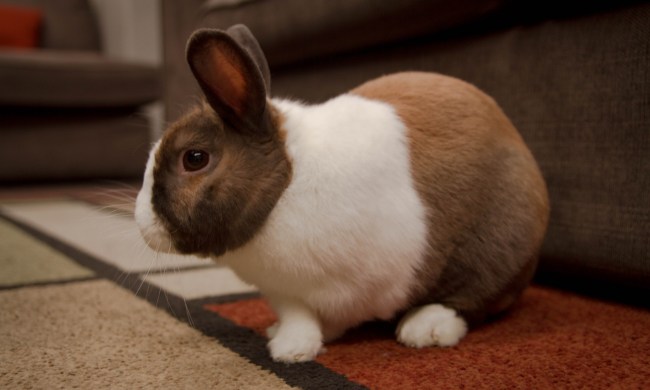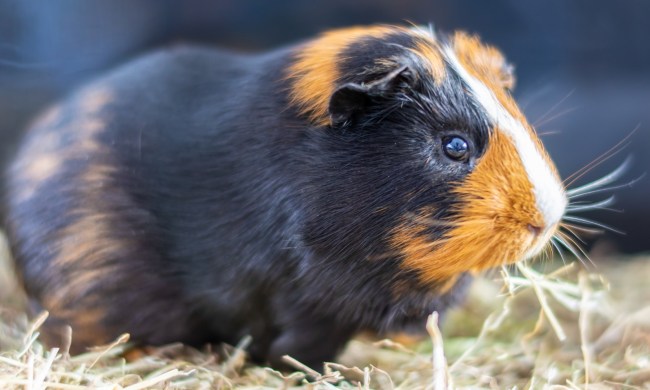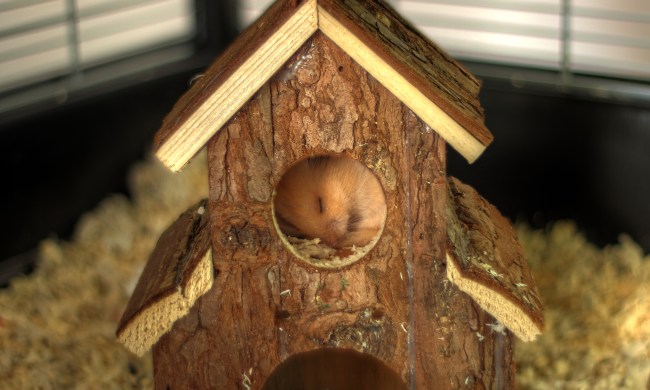Even the ancient Romans thought hedgehogs made great pets, and they’re still popular household companions today. Luckily, these spiky critters don’t require too much expertise to keep satisfied, though they do have a seemingly endless supply of energy. As with any pet, there’s some preparation that will go into hedgehog care, but they can make a fun and interesting exotic pet if you get it right.
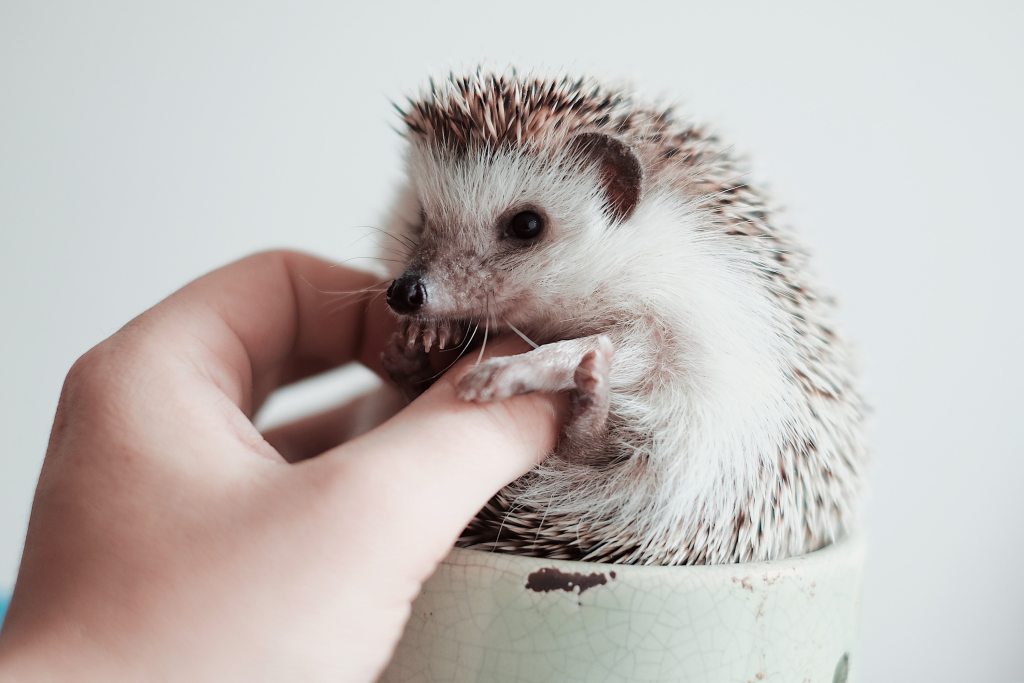
What is a hedgehog?
Unlike most small pets, this little guy does not belong to the rodent family, nor is he a marsupial or related to the bunny. So, hedgehogs differ from other animals that you might keep in your home and require some special care. You’ll probably adopt an African pygmy, which is actually a hybrid species that gets along well with humans. As the name suggests, your new friend will grow to only about 6–8 inches long. But that doesn’t mean he’ll be content with a small cage or with a companion hedgie. While you can certainly become close friends with this mammal, he won’t want to hang with others of his kind.
How to prepare his habitat
Get the right cage: Before you can bring home your hedgehog, you’ll need to provide him with a cage at least six feet long. One that was made for a rabbit will work, though you should take care to prevent his little feet from being hurt by a grated bottom.
Make the cage comfy: Fill the habitat with lots of comfy blankets or torn up paper to protect his paws and keep him cozy. Hedgehogs need things to be a little warmer than you prefer (about 80 degrees), so this will help with temperature regulation as well.
Ensure your hedgehog can exercise: Lastly, he wants way more exercise than you can provide. Buy him a big wheel to help get his steps in.
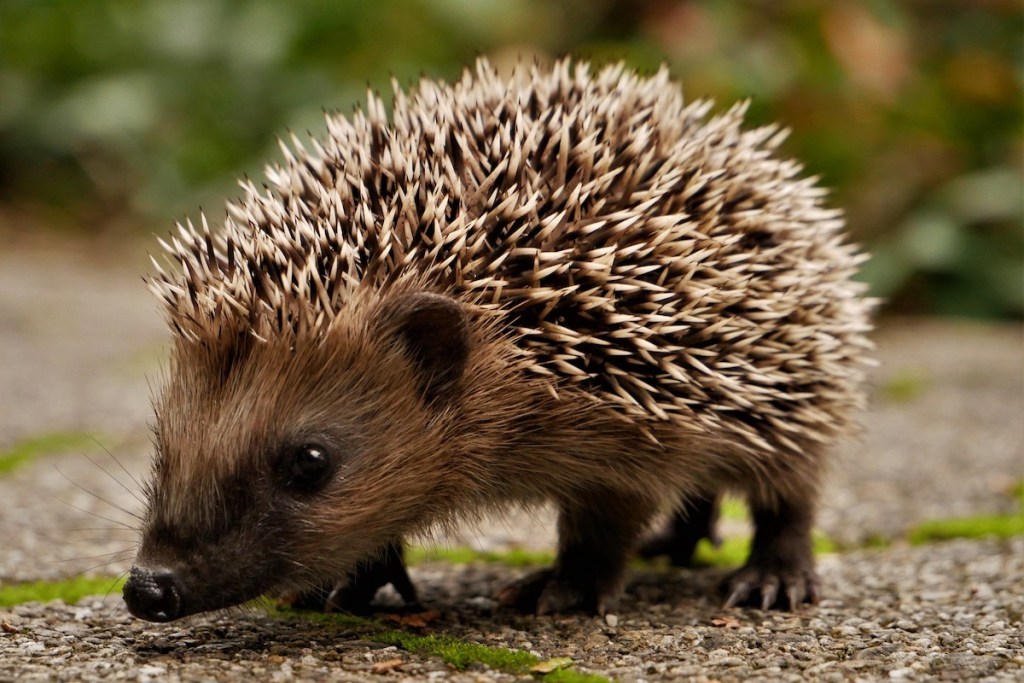
What to feed your pet
Hedgies are insectivores, but you don’t have to handle creepy-crawlies if you don’t want to.
Kibble: His kibble (which actually contains ground insects — don’t think about it too much) provides all the nutrients he’ll need to survive and thrive.
Insects: If you are up for an adventure, you can also find mealworms or crickets at the store and feed him those as a special treat. Never bring food in from outside since you don’t know what diseases it might be carrying, and you could make him sick by accident.
Some veggies: You can occasionally offer some veggies as well, like broccoli, and see if he gobbles it up. Remove it that day, though, if he turns up his snout since you don’t want it to start rotting.
Water: Keep his water bowl full at all times. Especially in the heat, he can dehydrate quickly.
How to handle your new friend
Since this animal is nocturnal, he might be a little sleepy and sluggish in the morning. Still, you want to handle him daily, especially as a baby, since that’s what will get him used to the human touch. You’ll know right away if he gets scared since he will roll into a little ball, spines out. The best way to prevent yourself from getting pricked while holding him is to put your hand against his soft underbelly. He will enjoy crawling gently into your lap after he’s been tamed. When he feels extra relaxed, he’ll put his spines down, and then you can stroke his back. Always go in the direction of the spines to avoid pricks for you and pinches for him. Never wear gloves. Since he goes by smell, that will confuse or even frighten him and you’ll get a roly-poly.
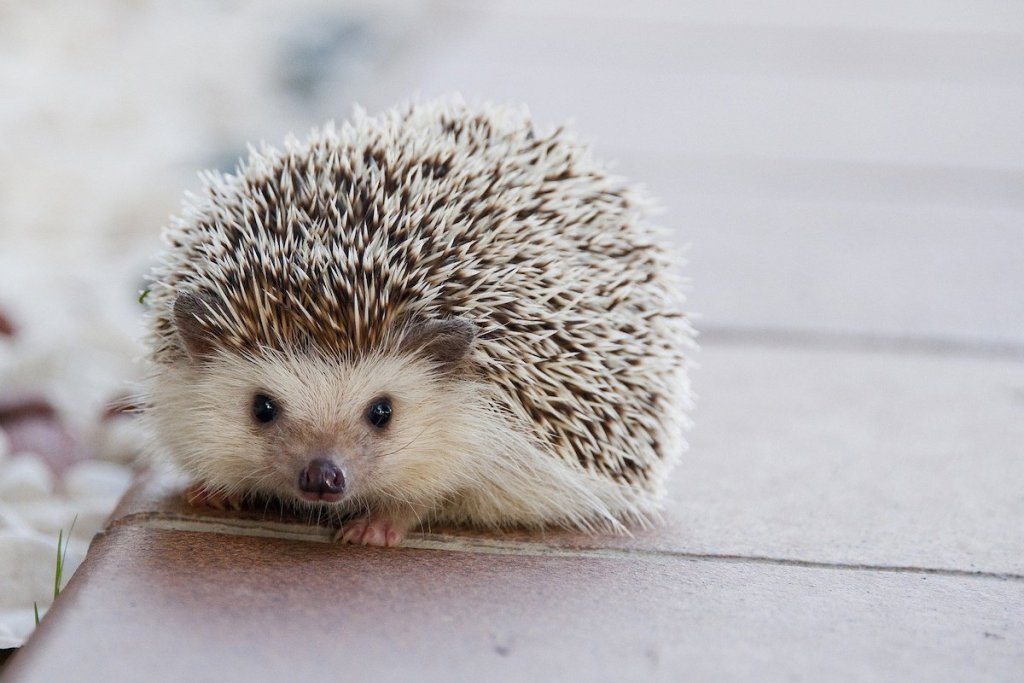
How to keep him healthy
As with all pets, you should get your hedgehog checked out by a vet every so often. The pet doctor may recommend fixing him to maintain health and will almost certainly suggest teeth cleaning. It’s best if you manage this at home with a pet toothbrush and toothpaste. Otherwise, he’ll have to go under anesthesia for a thorough dentist visit annually.
He may also love baths, which will help keep him healthy and squeaky clean. Don’t wash him too frequently, but once per month or so should do the trick with wipe downs if he gets dirty in between.
It’s okay if he loses spines sometimes. However, bald patches or excessive “shedding” (called “quilling” with hedgies) can mean there’s an issue such as a parasite. Take him to the vet if you’re concerned. With excellent care, he’ll live up to five years in captivity.
If you want the cutest pet on the block, a hedgehog might be the way to go. Even though they look like a hands-off pet, a well-raised hedgie will love strokes and cuddles from you and your family. Remember that some states, cities, and countries have restrictions on exotic animals. Research thoroughly and stay current with all required licensing and vet records. Always buy from a reputable breeder and check around for animals that need rehoming if you want to open your place to an adoptee.

